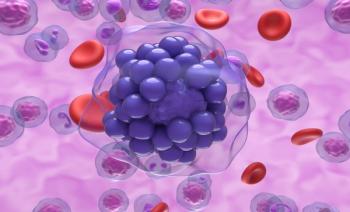
New Device, With Localized Drug Delivery to Pancreatic Tumors, Could Reduce AE
Mice administered FOLFIRINOX through the implantable device had greater tumor regression and lower tissue toxicity.
Pancreatic cancer is a disease with dismal survival rates (less than 5%) and the second only to non-small cell lung cancer for cancer-related deaths in the United States. A major challenge with treating this disease has been the stromal milieu that surrounds the solid tumor and forms a rigid, impenetrable barrier for chemotherapy. Now, scientists at the University of North Carolina at Chapel Hill have developed a technology that, at least in animal models, has found an Achilles Heel in these tumors.
The researchers have invented an implantable device that can deliver the highly toxic and promising drug cocktail of folinic acid (leucovorin), fluorouracil, irinotecan, and oxaliplatin (together called FOLFIRINOX), directly to the tumor.
“We use the device to hit the primary tumor hard. It’s an exciting approach because there is so little systemic toxicity that it leaves room to administer additional drugs against cancer cells that may have spread in the rest of the body,”
According to the paper, published in the
The authors found that 50% of mice who received FOLFIRINOX through the device had significant tumor regression and 1 mouse had stable disease. The mean log2-fold change in tumor volume were 0.4 in mice that received device FOLFIRINOX, 1.9 for IV FOLFIRINOX, 3 for IV saline, and 2.6 for device saline. Additionally, when the tumor tissues were stained for a cell proliferation marker, Ki-67, mice who received FOLFIRINOX through the device had significantly lower expression of the marker, indicating regression of tumor growth. Another important finding of the study was the reduced levels of tissue toxicity with the implanted device, which indicates that these toxic drugs may be better tolerated by patients, and might even improve their quality of life.
“The beauty of this device is that all of the drug delivery is focused locally, with low delivery to the rest of the body,”
Newsletter
Stay ahead of policy, cost, and value—subscribe to AJMC for expert insights at the intersection of clinical care and health economics.













































